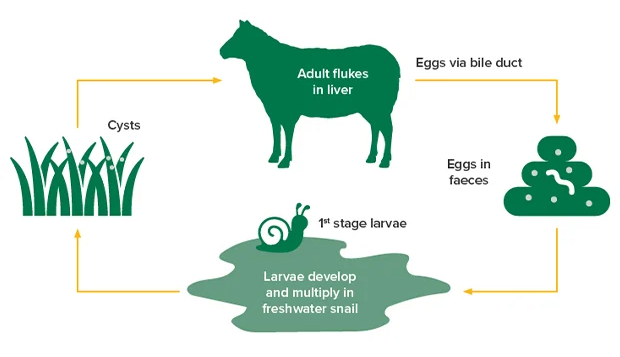Rainfall raises risk of liver fluke
08 Apr 2022
PRODUCTION ADVICE & NRM NEWS - APRIL 2022 - ANIMAL HEALTH
By Mark Stillman, District Veterinarian
M: 0499 589 822 | E: mark.stillman@lls.nsw.gov.au
Summer rainfall has created optimal conditions for Liver fluke (Fasicola hepatica), with warmth and moisture increasing the risk of liver fluke disease. Liver Fluke requires specific snails to complete their lifecycle. These snails inhabit wet marshy areas and release larvae onto pastures that infect sheep and cattle when eaten.
Sometimes a sudden outbreak of liver fluke disease will occur when stock are grazing in heavily infested areas. This may result in death without obvious symptoms, in some animals, and jaundice and abdominal pain in other animals. Death results from the damage fluke cause within the liver. This liver damage can also make sheep susceptible to Black Disease (Clostridium novyi), which can be prevented by maintaining an effective Clostridial vaccination program (ie, 5 in 1 vaccines).
More chronic infections will result in ill-thrift, decreased appetite, anaemia (paleness in mucus membranes around the eyes and the gums) and some animals may develop swelling under the jaw called ‘bottle jaw’
Liver Fluke should be considered when there are deaths, anaemia, or ill thrift in sheep or cattle grazing fluke-prone areas. Testing for fluke can be done via faecal sampling or blood tests.
Control of liver fluke can be done through strategic drenching (particularly important in April/May), restricting the habitat of the snails (eg stop leaking water troughs) and controlling the access of livestock to swampy, fluke prone areas or through controlled grazing that restricts livestock access to wet pastures where snails are present.
